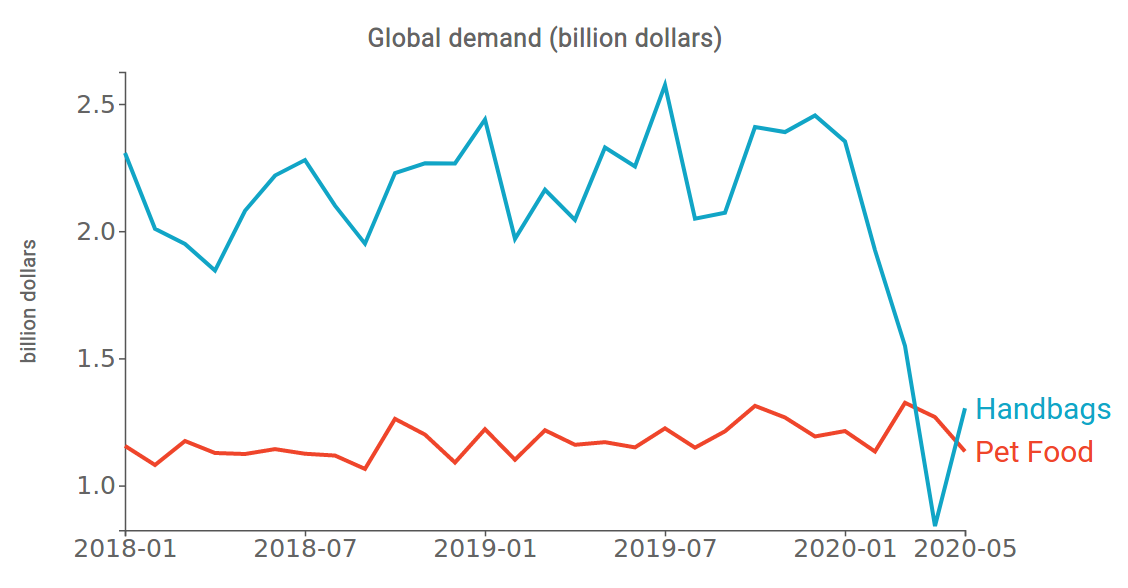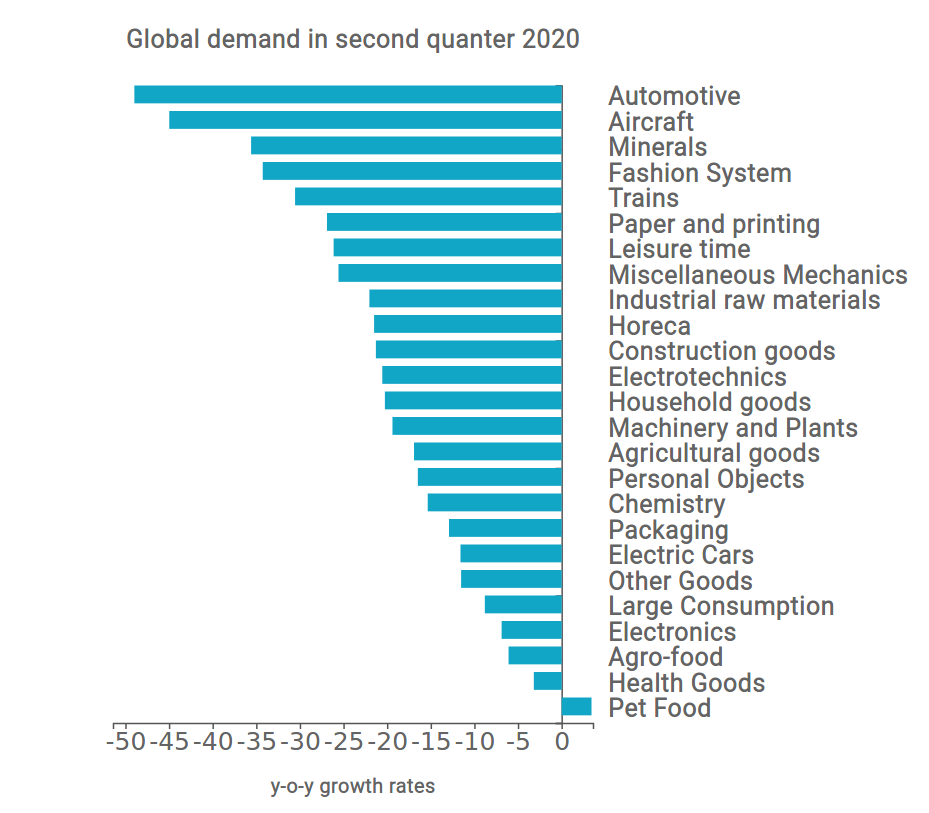Large Changes in the World Demand Structure
In the current health and economic crisis, the collapse in aggregate demand adds up to the change in its structure
Published by Luigi Bidoia. .
Global demand Covid-19 Great Lockdown Global economic trendsInversion of interest in Handbags and Pet Food
In terms of international trade, the current crisis seems to have a depth similar to that of the Great Recession of 2008-2009 and a more accentuated V-shape. However, several factors suggest that, in terms of the overall economic impact, it might be significantly worse, and only extraordinary monetary and budgetary policies will mitigate its negative impacts on households and businesses. This is valid for both developed countries and emerging economies.
The reasons for this potential greater impact are to be found in the profound changes induced by this crisis on consumer preferences. A measure that allows an initial assessment of the magnitude of these changes is shown in the figure below, which presents the monthly demand for Bags and Pet Food in USD.

Source: ExportPlanning -Quarterly International Trade Datamart
The restrictions imposed by the lockdown, both in terms of retail closures and limitations of social interactions, have led to a drastic reduction in consumer interest in handbags. Conversely, the growing focus on pets has supported Pet Food purchases. In terms of world trade, handbag trade fell below the level of Pet Food trade in April, highlighting how, in the most acute phase of the lockdown, a change in consumer preferences has taken place. In May, there was a slight recovery in world demand for handbags, although very marginal, considering the difference in world demand for the two goods before the pandemic.
A new structure of demand for goods
Using world trade flows at the 6-digit Harminzed System code level, StudiaBo carried out an initial clustering to analyze the dynamics of several products, based on year-on-year rates of change in world demand in the second quarter of 2020. The graph below shows the main results.

Source: ExportPlanning -Quarterly International Trade Datamart
The analysis of the graph clearly shows the large dispersion of y-o-y rates of change of world trade flows. Transport-related trade flows are significantly more affected, e.g. Automotive, Aircrafts and Trains. Strong reductions have been recorded by world trade in goods of the Fashion System, leisure and publishing products.
On the other hand, Fast Moving Consumer, Health and Agri-food goods, with the exclusion of those distributed through the Horeca channel, recorded limited decreases. Pet Food is characterized by being the only product with a positive rate of change.
It is reasonable to suppose that these large differences in world trade dynamics mainly reflect the effects of a shock in global demand. This is relevant not only for its intensity, but also for the different impacts on the various products. Equally differentiated are the changes in demand for services, with the contact-intensive services sectors like hospitality, travel and tourism being much more penalized than others. It is likely that these changes in the structure of demand will tend to decrease as the current health and economic crisis tends to be absorbed. However, it is difficult to imagine that the current differences can be completely absorbed, imposing non-marginal adjustments on the supply side as well. This supply-side adjustment is an additional challenge for the production systems of different countries.
In this context, the dynamics of import flows at product level could become a particularly valuable indicator for mapping the new structure of demand that will develop in the various countries of the world.


